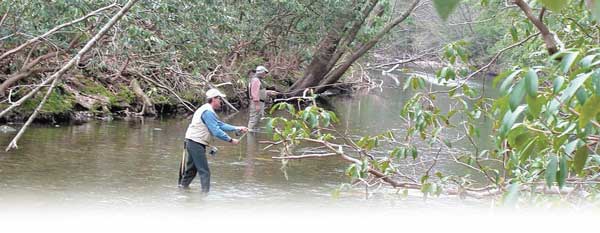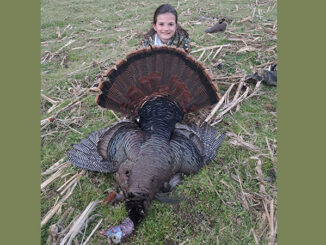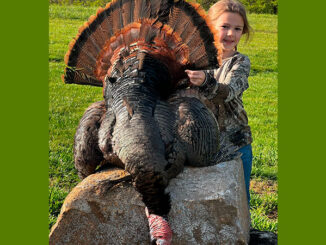
The Davidson River is N.C.’s top trout stream, but catching lunkers takes time, skill and effort.
“Where should I start?” said Dale Brentrup as donned our waders at Pisgah Forest Fish Hatchery parking lot.
“There’s a pool just opposite the hatchery,” I said. “There are usually trout in that pool.”
An hour or so later, Dale reported on his success.
“Man, there are some monster trout there,” he said. “I threw about everything I had and didn’t catch a fish.”
Once again, Frustration Pool at the Davidson River earned its moniker.
The Davidson River, a tributary of the French Broad River in Transylvania County, was named by Trout Unlimited as one of America’s top-100 trout streams.
“The Davidson is justly famed as one of North Carolina’s premier trout fisheries,” wrote John Ross, author of TU’s “America’s 100 Best Trout Streams.”
Kyle Briggs, fish production supervisor for the North Carolina Wildlife Resources Commission, confirmed the TU assessment.
There’s pretty much always a good population of catchable fish in the Davidson,” he said. “But it’s not because of anything we do. The Davidson, from the headwaters to Avery Creek, is managed as catch-and-release/artificial-flies-only waters.”
While legends abound that monster trout escape from the hatchery into the Davidson, as a practical matter, the trout are wild.
Squeak Smith, a member of TU’s Board of Directors who lives at Morganton, has a long history of fishing the Davidson.
“My best fish at the Davidson was a 3 1/2-pound brown trout, 21-inches long,” he said. “I caught it during the fall spawn. I’ve worked several big fish, mid-20 inches and more than 6 pounds. They didn’t get that size by being stupid.
“You had better make a perfect presentation on the initial offering or come back another day and try it again. One fall I found a big fish and targeted it for half a dozen trips over a three-week period. I saw the fish on each trip, got casts over him but never could connect.”
Ernie Newman, also a Davidson River fan living at Hendersonville, has experienced similar frustrations.
“My biggest trout on the Davidson was a 16-inch brown,” he said. “I’ve had a bigger fish on, but I tried to outguess him and he ducked under a stump.”
Testimony about the quality of Davidson River trout fishing is common. So the river is well worth the effort of Tar Heel trout anglers.
Where are the trout in January and February?
“Fish will be typically concentrated in the larger pools,” Smith said. “With the colder water, you can overlook much of the typical summer fast water. With limited insect activity, I always try to go deep at the very heads of fast water, get down on the bottom, ticking the rocks. And don’t be afraid to wade close to these chutes. Short accurate casts covering all the slots without drag will often result in success.”
Newman agreed on the prime spots for winter Davidson trout.
“Typically they’re at the heads of pools,” he said. “But you need to fish deep. I guess that’s where the food is.”
A pool is a spot where a stream bed sinks and subsequently rises and the current slows. The head of a pool is often the spot where food dislodged in more rapid water upstream first becomes vulnerable to waiting trout.
Smith said much of the period from late fall to early spring is trout-spawning season at the Davidson.
“Gravel tailouts at the ends of larger pools and side channels are prime spawning grounds for some of the bigger resident browns and brookies in the late fall, and then in January to early March, weather dependent, the rainbows start their rituals and the browns are getting their strength back from spawning rigors,” he said. “Egg patterns at that time of year are much more often productive over nymphs.”
Dry flies sometimes work at the Davidson during winter, though the circumstances are limited — a warming trend is required.
“Don’t expect much if any dry fly action,” Smith said, “perhaps a midge or a little black stone fly hatch if the sun comes out for a while. However, using a dry fly size 18, a caddis or a parachute pattern as a strike indicator, with an egg pattern size 12 to size 18 tied below it can sometimes result in some surprise surface action.”
Newman agreed.
“Typically we get a couple of warm days in January,” he said. “For a couple of hours on those days, there is good action on dry flies.”
Anglers should try an elk-hair caddis, parachute Adams, trude or parachute Royal Coachman.
But Smith and Newman rely mostly on nymphs for fishing the Davidson during winter. The most productive patterns are beadhead-style nymphs. The beadhead helps sink the nymph to the desired depth.
“Among the nymphs, I stick with beadheads with size 12 the largest I use, down to about a size 18,” Newman said. “Generally, smaller is better.”
He said a Pheasant Tail is a productive nymph or also consider a Gold-ribbed Hare’s Ear, Copper John, Prince or any other of the trout-angling standards.
While most nymph-fishing trout anglers rely on a strike indicator to monitor the drift of the nymphs and keep the fly off the bottom, Newman doesn’t use the most common strike indicator, one which parallels a bobber in style and function.
Personally, I don’t like the big cork, plastic, or yarn indicators,” he said. “If I use an indicator, I use one of the little foam wrap-around indicators. You have to cast in a different way with a big indicator. Nymph fishing takes some finesse to do it right. Lot’s of people think it’s easy but it’s not.”
Strikes at nymphs often are subtle and only a twitch of the line or leader signals a take. The strike indicator helps anglers recognize a strike.
In the book “The New North American Trout Fishing,” John Merwin agreed with Newman. Merwin wrote that nymph anglers using a strike indicator “have learned absolutely nothing about fly-fishing for trout.”
Trailing a nymph below a dry fly indicator is also a productive method of nymph presentation. Use a dry fly easily visible, a size 10 or12, as the indicator. Trude style or a parachute with an orange post are examples.
Smith recommended tying the nymph to a 12- to 18-inch dropper attached to the bend of a dry fly. The best method for fishing this rig is to move upstream, casting to likely spots and stripping line to maintain contact with the flies. When the indicator moves unusually, that means a hit.
In addition to fishing the Davidson where the road parallels the stream, don’t overlook Looking Glass Creek or Slick Water Creek below the falls. While the trout at these streams run a little smaller than those at the Davidson, they’re plentiful and feisty.
“I’m still trembling at that big rainbow at Frustration Pool,” Brentrup said as we left the fish hatchery, “I’ll be back after that guy”
That’s fishing at the Davidson, a top-100 stream readily accessible to Tar Heel anglers.




Be the first to comment